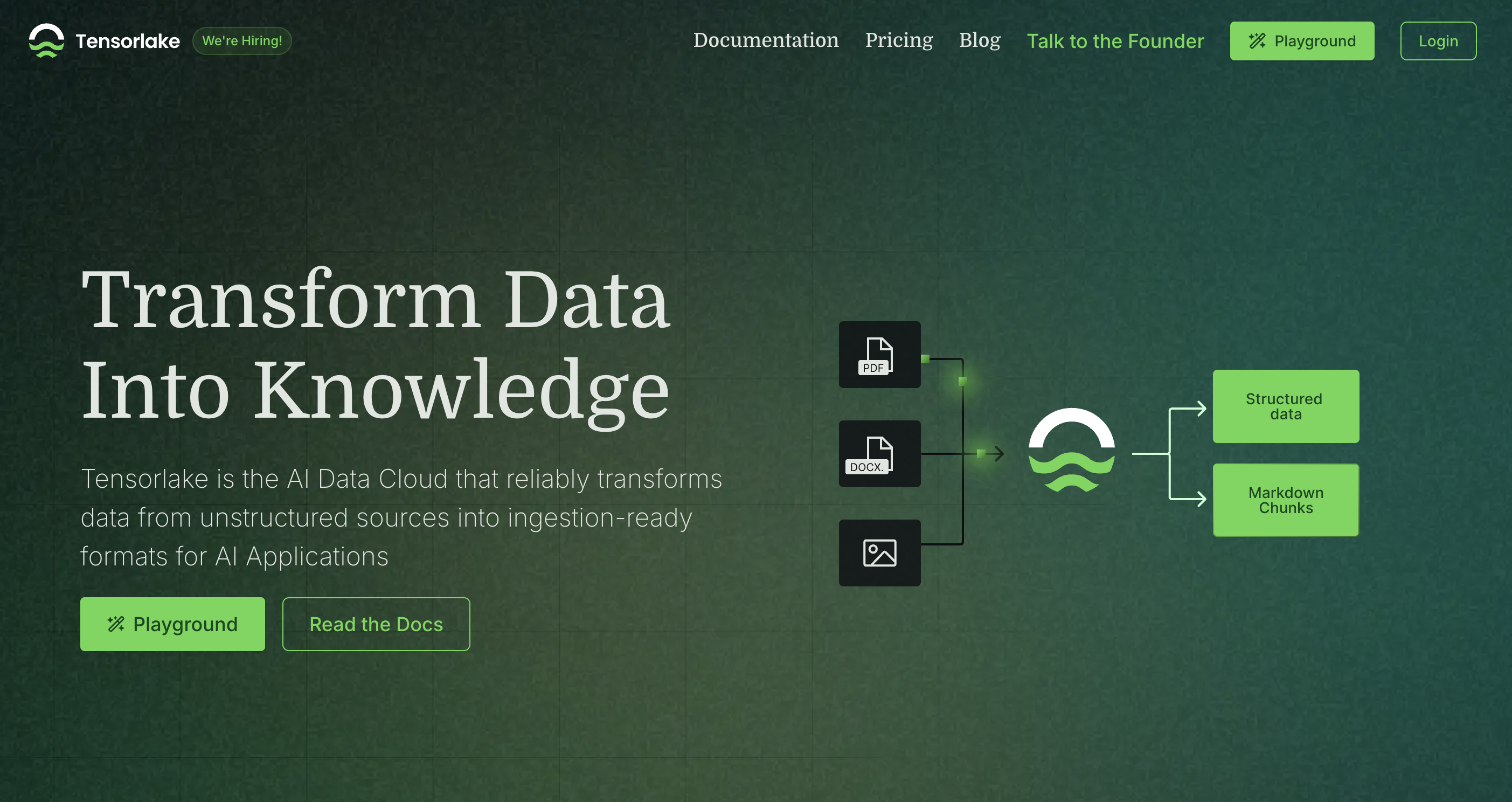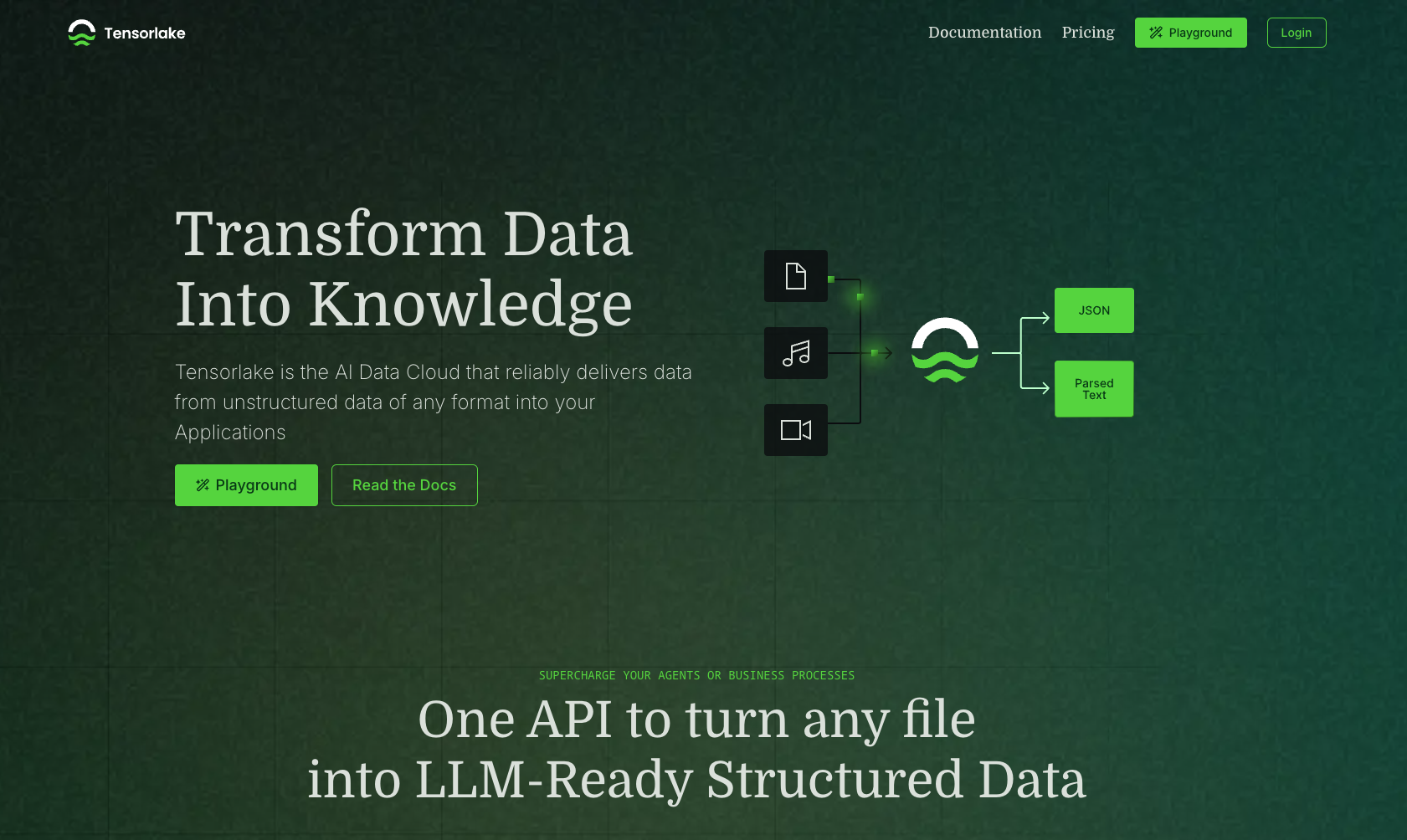
Table of Contents
Overview
In today’s data-driven world, extracting valuable information from documents is crucial for business success. But let’s face it, traditional document processing can be a tedious and error-prone task. Enter Tensorlake, a cloud-native platform designed to revolutionize how enterprises handle document ingestion and workflow orchestration. This innovative tool leverages layout-aware AI to understand document structure with human-like precision, paving the way for scalable, production-ready workflows powered by Python. Let’s dive into what makes Tensorlake a game-changer.
Key Features
Tensorlake boasts a powerful suite of features designed to streamline document processing and unlock valuable insights. Here’s a closer look:
- Human-like document parsing: Tensorlake’s AI engine understands document layout and context, extracting data with unparalleled accuracy. This goes beyond simple OCR, allowing it to identify tables, sections, and other structural elements.
- Scalable data orchestration: The platform is built for enterprise-level scalability, handling large volumes of documents with ease. This ensures consistent performance even during peak processing times.
- Python workflow integration: Seamlessly integrate Tensorlake into your existing Python-based workflows. This allows for custom data transformations, validations, and integrations with other systems.
- Real-world layout comprehension: Tensorlake excels at understanding complex and varied document layouts, making it suitable for a wide range of document types. It’s designed to handle the messy reality of real-world documents.
How It Works
Tensorlake simplifies document processing with a straightforward and efficient workflow. Users begin by ingesting documents into the platform. Tensorlake’s AI then intelligently parses the layout and content, extracting relevant data with high accuracy. This extracted data is structured and automatically routed into workflows built using Python. This allows for complete automation of document-centric processes, enabling scalability and efficiency across enterprise environments. The platform’s intuitive interface and powerful API make it easy to integrate into existing systems.
Use Cases
Tensorlake’s versatility makes it a valuable asset for various industries and applications. Here are a few key use cases:
- Enterprise document processing: Automate the extraction of data from a wide range of business documents, such as contracts, reports, and financial statements.
- Invoice and receipt automation: Streamline accounts payable by automatically extracting key information from invoices and receipts, reducing manual data entry.
- Insurance form ingestion: Accelerate claims processing by automatically extracting data from insurance forms, improving efficiency and accuracy.
- Compliance data extraction: Ensure regulatory compliance by automatically extracting relevant data from compliance documents, reducing the risk of errors and penalties.
Pros & Cons
Like any tool, Tensorlake has its strengths and weaknesses. Let’s take a look at the advantages and disadvantages.
Advantages
- High-fidelity layout understanding: Tensorlake’s AI excels at understanding complex document layouts, ensuring accurate data extraction.
- Scalable Python workflows: The platform’s Python integration enables the creation of custom, scalable workflows to meet specific business needs.
- Flexible API integration: Tensorlake’s API allows for seamless integration with existing systems and applications.
Disadvantages
- May require Python knowledge: Building custom workflows requires some familiarity with Python programming.
- Enterprise-oriented pricing: Tensorlake’s pricing may be more suitable for larger organizations with significant document processing needs.
How Does It Compare?
When evaluating document processing solutions, it’s important to consider the alternatives. Compared to Docparser, which relies on rule-based parsing, Tensorlake offers a more intelligent and flexible approach with its layout-aware AI. While Rossum also focuses on AI-powered parsing, Tensorlake provides a more comprehensive set of orchestration tools for building end-to-end workflows. This makes Tensorlake a more robust solution for enterprises seeking to automate complex document-centric processes.
Final Thoughts
Tensorlake offers a powerful and innovative solution for enterprises seeking to streamline document processing and unlock valuable insights from their data. Its human-like document parsing, scalable Python workflows, and flexible API integration make it a compelling choice for organizations looking to automate complex document-centric processes. While Python knowledge may be required for custom workflows and the pricing is enterprise-focused, the benefits of increased efficiency and accuracy make Tensorlake a worthwhile investment for many businesses.

